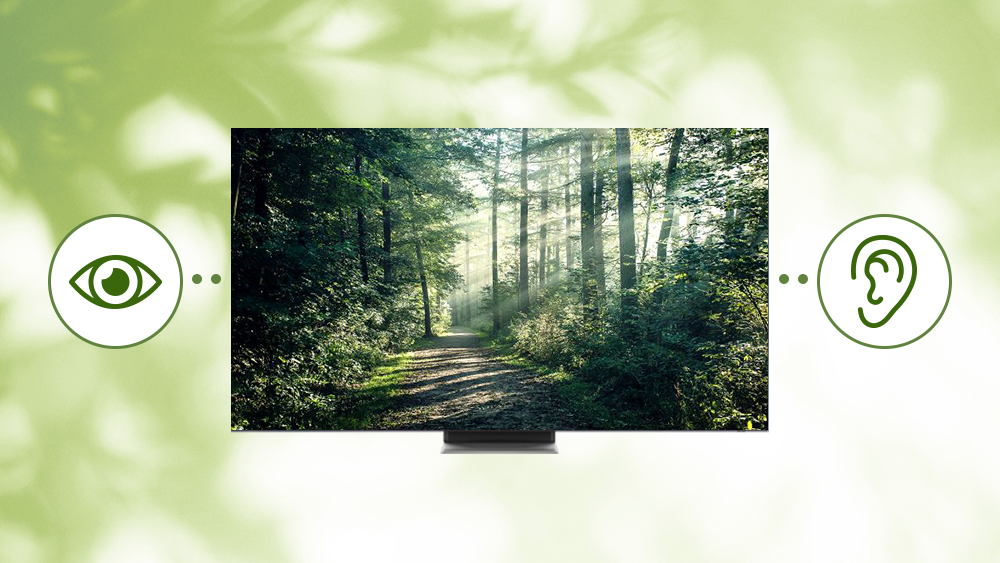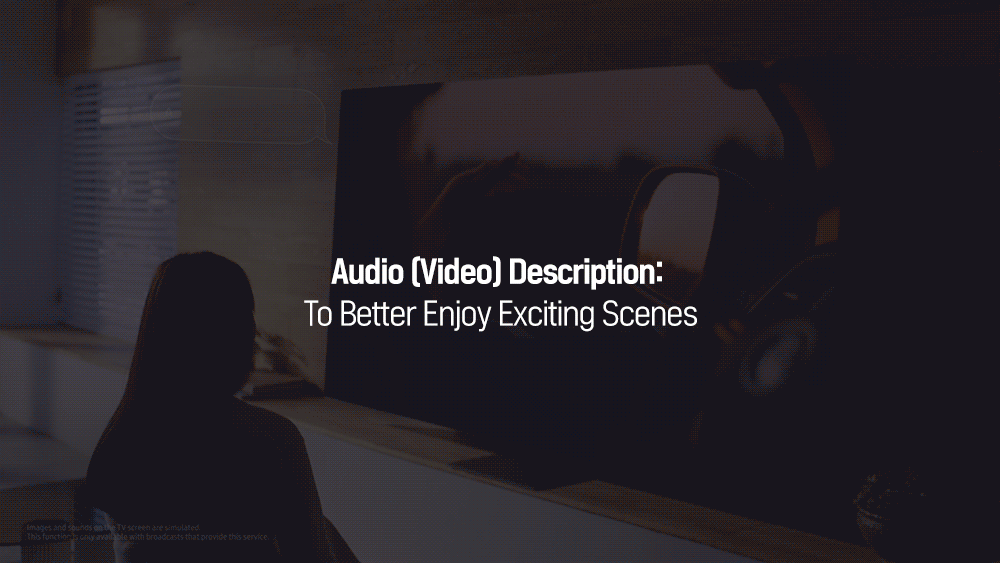A television is a portal that can connect us to the world. As the amount of diverse content users have access to continues to grow, the range of entertainment they can access through their TVs is also expanding. Yet despite this innovation, for those who are hard of hearing, the deaf, people with low vision and the blind, accessing basic TV features like sound controls and screen settings can still prove challenging.
As Samsung unveiled at its First Look 2021 event, the company’s 2021 TV lineup will harness the latest advances to allow those who are hard of hearing, the deaf, people with low vision and the blind to enjoy their TV experiences in comfort. This will be achieved with the help of Samsung’s new CES 2021 Best of Innovation Award-winning accessibility features for TVs, including Caption Moving, Sign Language Zoom, Multi-Output Audio and Voice Guide. Going forward, Samsung will keep developing new AI-based features to continue making Samsung TVs more and more accessible.
Samsung Newsroom looked at the suite of accessibility features offered on Samsung TVs, as well as the company’s commitment to its new ‘Screens for All’ vision, which is helping ensure that everyone can enjoy their TVs.

SeeColors App: A New World of Color for those with CVD
The capability of Samsung TVs to reproduce lifelike color is constantly improving, however this is not as evident to those who suffer from color vision deficiency (CVD). Samsung’s SeeColors app1 makes color adjustments to aid those with CVD and help them enjoy a better viewing experience with optimized colors.

By using the app on their TV, users can identify their CVD type and level and directly recalibrate their screen settings based on the results. The SeeColors app is available to download from Apps, the Smart TV app store.
Color Inversion: For Comfortable Viewing without Glare
It is also difficult for people with low vision to perceive colors clearly. In particular, black text on a white background can cause glare for people with low vision who are sensitive to light. The fact that their eyes tire easily also hinders comfortable TV viewing.

In this case, the Color Inversion feature can prove helpful. Inverting menu colors so that the text is white and the background is black raises visual perception and alleviates eye fatigue. While inverting the colors of the TV menus to make navigating them easier, this feature leaves the colors of the actual content being displayed the same in order to best meet the needs of users with low vision.
Features are also available to assist people with complete color blindness. These include GrayScale, which can convert color images into black-and-white. Meanwhile, the Focus Enlarge feature allows users to enlarge text and smaller details on interfaces such as Smart Hub.
Audio (Video) Description: To Better Enjoy Exciting Scenes
Spectacular action movies and exciting sports matches can really keep viewers on the edge of their seats. However, those who are blind are often limited to appreciating actors’ performances and athletes’ physical feats purely through their sense of hearing. In these circumstances, the information these users take in through sound effects and dialogue alone is bound to be limited.

Audio (Video) Description is a feature that provides verbal descriptions of the situations and settings being displayed on the screen, in addition to the dialogue or commentary. It helps viewers who are blind enjoy their content more completely by providing explanations of factors that are hard to capture with audio alone, such as characters’ clothing and their body language.
Learn TV Remote: For Ease of Use
A remote control is a handy tool that puts the ability to control channels, volume and TV settings in the palm of your hand and makes viewing much more convenient. However, it is difficult for those who are blind to know what each button does. Thus, it generally takes a long time for them to learn the buttons and get used to using the remote control.

Learn TV Remote is a feature that helps blind users get used to the location and function of each button through repeated practice. If you press a button on the remote control while the mode is on, the name and function of the button will be explained audibly. To return the remote control to regular functionality, press the ‘back’ button twice to turn off learning mode.
Voice Guide: To Better Navigate Channels and Control Volume
When viewers want to catch an episode of a TV show they like, they generally turn on their TV and navigate to the right channel by looking at the channel number or name. However, when they first turn the TV on, it is difficult for viewers who are blind to know what channel they are on, as well as what level the volume is set at.

By telling you what channel your TV is on and what volume level it is set at, the Voice Guide feature eliminates the need to press buttons on the remote control multiple times to navigate to the channel and volume settings you want. The feature additionally enhances convenience by providing information on the program that is currently being aired as well as the upcoming TV schedule.
Accessibility Shortcuts
When you hold down the mute button on the remote control for your Samsung TV for more than two seconds, you will be taken to a menu where you can customize a variety of accessibility settings. In this menu, you will be able to select the most appropriate accessibility features for yourself or your family members. This menu is accompanied by a Voice Guide that allows any user to navigate it without difficulty.
Continued Accessibility Efforts Based on User Feedback
Based on its belief that an accurate understanding of visual deficiency conditions is necessary to developing appropriate accessibility features, Samsung has collected feedback from users in order to make TVs that are also convenient for people with low vision and those who are blind.
To that end, Samsung has been working with the Royal National Institute of Blind People (RNIB) in the UK since 2013 to ensure that Samsung products are equipped with the proper features to offer accessibility to all consumers. Due to its continued efforts, the company received the RNIB’s ‘Tried and Tested Accreditation’ for its 2020 Smart TVs, which is the first time the accreditation has been awarded in the TV industry.
In pursuit of its ‘Screens for All’ vision, Samsung will continue to work and innovate to ensure that Samsung TVs provide an enjoyable viewing experience for all.
1 This app is not intended for use in the diagnosis of disease or other conditions, or in the cure, mitigation, treatment or prevention of disease or medical problem. Any information found, acquired or accessed through this app is made available for your convenience and should not be treated as medical advice.
February 04, 2021 at 09:12AM
https://ift.tt/2MVnVTf
[Expanding Accessibility with Samsung] ① Vision – Samsung Global Newsroom - Samsung Global Newsroom
https://ift.tt/2O3clnm
/article-new/2021/06/iphone-13-duan-rui2.jpeg?lossy)
No comments:
Post a Comment